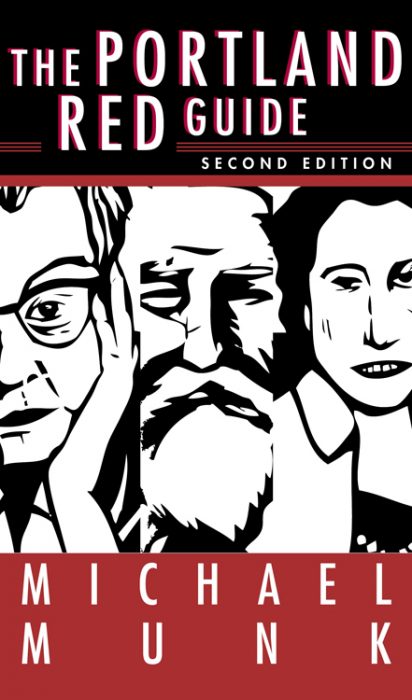If there is one Ooligan book I see around town more than any others, it’s The Portland Red Guide. The second edition of Michael Munk’s historical timeline, mapped out on our present-day city grid, seems to be a staple on book-store end caps, as well as Ikea shelves in homes and workspaces. One glance through the tri-color guide and it’s easy to see why. The book has everything a reader and traveler could hope for: color coding, maps within maps, historical photos, chronological order, and walking tours.
I can’t imagine the time it took Ooligan alums Alan Dubinsky and Tristen Knight to figure out ways of organizing this disparate material. The results are both aesthetically pleasing and useful. The events are broken down into six chapters, representing six periods of radical social dissent:
- 1804–1899 Utopians & Marxists
- 1900–1930 Wobblies & Socialists
- 1930s: Unions & Commies
- WWII–1960- McCarthyism & Cold War
- 1960–1973 Peaceniks & Civil Rights
- 1974–Present Identities & Protests
At the end of each chapter, there is a series of simple street maps of the Portland we know today. Numbered red boxes correspond to the events described and pinpoint exactly where they took place. This format takes the reader beyond the common history book, and allows Munk to tell forgotten stories and link them to physical sites within the city. People and organizations that fought for equality and justice against the abusive powers of their day are given new life for the Oregonians standing up for what they believe in today. (And if there’s a city that stands up for its beliefs, it’s Portland.) The Portland Red Guide is both a guidebook and an informal history that will expand your perspective on the city and its past.
The man behind the book has an equally interesting past. Michael Munk was born in Prague in 1934 and came to Portland after escaping the Nazi occupation of Czechoslovakia in 1939. A true local, he graduated from Hillside School, Lincoln High School, Reed College, and the University of Oregon, where his received an MA in political science. He also earned his PhD in politics from New York University. His political activity began in the 1950s, when he became a vocal opponent of nuclear testing, and continued into 1954, when he took over as vice president of the Young Democrats of Oregon. The government drafted Munk in 1959, sending him to South Korea. After his military service, he became a journalist for the leftist New York weekly National Guardian. He taught political science for over twenty-five years at Stony Brook University, Roosevelt University in Chicago, and Rutgers University in New Jersey, before retiring to Portland.
Since his return, Munk’s publications have focused on local radical history, making him the perfect author for this guide. His work has been published in the Oregon Historical Quarterly, the Pacific Northwest Quarterly, Science & Society, and The Oregonian. His column, “Our Radical Past” was a monthly feature in the Portland Alliance for several years before he began work on the first edition the The Portland Red Guide. Photos and additional information about the book can be found on his website.

